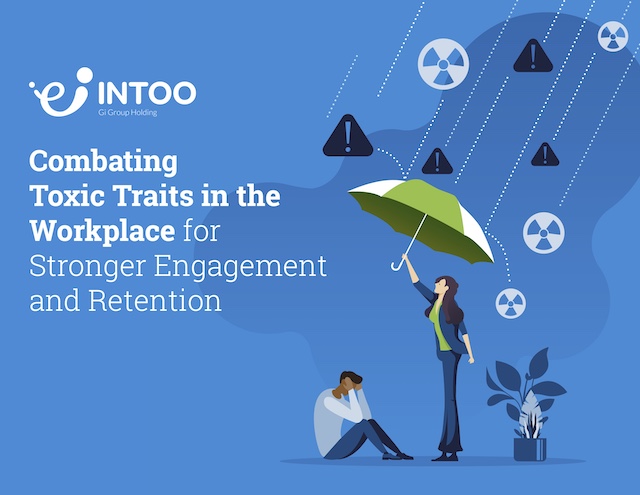Note: This article contains spoilers about the TV series, “Succession.”
Television’s Roy family of the show “Succession” has blessed the world of business with more lessons of what NOT to do than can be mentioned. The show follows patriarch and media mogul Logan Roy as he plans for the future of his conglomerate, and whether that future includes any of his three youngest children. But—and here’s the first spoiler—Logan dies before that future is clearly determined.
“For some of us it’s a sad day, but for others it’s coronation demolition derby.”
— Siobhan (Shiv) Roy, following the death of her father
With his passing, one thing is made perfectly clear—a succession plan is important to ensure business continuity, reduce risk, and prevent conflict from spilling into every part of a company. In this blog post, we will explore why a succession plan is vital for organizations and draw examples from the captivating world of “Succession.”
Reasons Why a Succession Plan Is Important
1. A smooth transition to new leadership ensures business continuity
In the show:
In the TV show, the unexpected death of Waystar Royco CEO Logan Roy causes panic among his children, board members and leadership team, who have yet to determine a successor and are in the middle of negotiating the sale of the majority of Waystar’s entities to Swedish tech media giant GoJo, per Logan’s direction. Pandemonium ensues as multiple leaders and family members fight for their place at the top without a process in place to determine the next in line. Further chaos erupts when each person reveals their individual ideas for how the company should move forward—some of which exclude GoJo—which could upend Logan’s original plan for the business. Logan created this plan to sell his company in part because he didn’t believe any of his children—who, in his view, are “not serious people”—were fit to lead it. Without him around to make the final call, his children Kendall, Roman, and Shiv end up at odds with both each other and members of the board, as each asserts their claim to the throne.
“I’m the eldest boy!”
– Kendall (who, in fact, has an older half brother), exclaiming that the position at the top is his birthright
In practice:
A succession plan guarantees the continuity of an organization’s vision and operations, even in times of unexpected leadership changes. Steps taken during the creation of the plan help to identify the person or persons who have the experience, knowledge, interest and ability to take ownership of the responsibilities that come with assuming the role if and when it’s vacated. Having such a plan in place would have ensured Logan’s vision and strategy were carried out without challenge, particularly if the plan were made transparent to the organization. This is why it’s also crucial to communicate the succession plan to your company so that the leadership team isn’t questioning next steps and your workforce isn’t doubting the security and future of the business in times of change.
Without transparency and awareness of the succession plan, you could be left with various assumptions of who the successor should be. It’s important to review and update the plan over time, as well. When making or considering changes, members of the team should be included and informed of updates. In the show, Logan unintentionally left his wishes open to interpretation with a small line of ink on a years-old letter, which was found in his safe, that either meant to underscore Kendall as his replacement or to remove him from the role altogether.
“I wonder what with the, you know, the underlining or the crossing out and the unknown age [of the document], if the document isn’t essentially moot.”
– Shiv
Whether due to retirement, illness, or unforeseen circumstances, the departure of a key leader can create significant disruptions. By having a succession plan in place, organizations can minimize uncertainty, maintain stability, and continue their mission seamlessly.

2. Developing future leaders ensures they’ll be ready to assume the roles
In the show:
In addition to Kendall, Logan’s younger children Roman and Shiv individually express interest in leading Waystar, even though neither has extensive (or any) leadership experience. Had the company been open to the idea, an investment in career development could have helped them to develop the skills and acquire the experience needed to take on a leadership role over time.
Kendall was initially groomed by his father to potentially follow him as CEO, and so arguably would have carried forward the values, objectives and operational nuances that preceded him, had he been officially named successor.
“When I was seven, he sat me down at the Candy Kitchen in Bridgehampton and he promised it to me.”
– Kendall, about his father promising him the role of successor
But Logan’s faith in his children’s leadership abilities had waned, and he assumed that the transition to GoJo’s leadership was imminent and on track. No potential successor was properly prepared, which resulted in chaos during the critical period of time before the GoJo sale received approval from the board.
In practice:
Most accomplished leaders understand and acknowledge that not everything is within their control, and so they have contingency plans for a variety of business situations. This is part of what makes them successful. A well-designed succession plan is such a contingency, as it allows organizations to identify and nurture talent from within their ranks. By assessing potential candidates and providing them with appropriate training and development opportunities, organizations can groom future leaders who bring with them inside knowledge that can benefit the company not only during leadership transition but well into the future. In addition, organizations that prioritize succession planning can cultivate a pipeline of talented individuals who are prepared to take on greater responsibilities in a variety of roles when the time comes, which can also aid in retention.
3. It helps protect stock price and shareholder value
In the show:
Despite Logan’s previous health scares, the family and organization never created a statement or plan to address the press should he die. As a result, the board scrambles to create a story that will minimize the impact to and jeopardy of its stock price and the company’s sale to GoJo. Regardless, the company’s stock drops 20 percent once news gets out, and doesn’t fully recover when Kendall and Roman are (to their sister Shiv’s dismay) announced as co-CEOs.
As a result, GoJo’s leader, billionaire Lukas Mattson, finds himself in a stronger position and wants to renegotiate the deal in order to purchase all of Waystar. The siblings end up pitted against each other. How all of this pans out will have consequences for the family, the board, investors, employees, GoJo, and beyond.
In practice:
Without a succession plan, organizations face the risk of external disruption, such as losing market share, investor confidence, or competitive advantage, in addition to customers and partners. It’s vital for organizations to anticipate potential risks, prepare for leadership transitions, and establish a framework that ensures a seamless transfer of power.
 4. An established transfer of leadership encourages employee trust and retention
4. An established transfer of leadership encourages employee trust and retention
In the show:
Who better to represent the fluctuating confidence in the organization than the Roy siblings’ cousin Greg, whose alliance flip flops between mentor Tom and his cousins according to his likelihood of getting even a small slice of the power pie. Other associates similarly shift their allegiance over the course of the deal depending on whether it offered them power or payout, which adds to the ongoing power struggle.
When Shiv reveals her own lack of confidence in Kendall as future CEO, their brother Roman joins in on the barbs, resulting in a physical fight with his brother in a glass-walled room for the whole board across the hall to see. Of course, any workplace would be unsettled if they witnessed their co-CEOs in a physical fist fight. It reflects poorly when the leadership can’t control themselves, let alone the company. It’s no surprise, then, that the board votes in favor of the sale of the entire company to GoJo, destroying Kendall’s dream of managing the company along with his father Logan’s strategic plan to retain their TV network, ATN. Ultimately, Shiv’s estranged husband, Tom, is awarded the reins by Mattson once the acquisition goes through, and the future of the organization remains uncertain.
In practice:
Leadership voids can lead to internal strife, talent attrition, and a decline in employee morale. An organization with established and transparent practices and plans in place more easily gains the confidence and loyalty of its internal stakeholders. Individuals within and outside the organization can trust that the organization will continue to operate efficiently, regardless of changes in leadership. Organizations that have a well-communicated succession plan inspire confidence, ensuring that the business can navigate transitions without compromising its core values and objectives.
How to Develop a Succession Plan Strategy
While members of the Waystar team and Roy family might launch headfirst into a plan guided by individual desires and selfish goals, your organization will want to approach creating your succession plan with a strategy that addresses the following:
- The goals and objectives of the succession plan
- The roles and responsibilities of those participating in the succession plan strategy, which includes not only creating it, but also maintaining it
- Who will create the succession policy, and what does the policy need to consider
- Who the potential candidates for succession are, and whether they require leadership development
- A plan to communicate the process with the organization
Don’t Be Like the Roys. Have a Succession Plan Strategy.
The fictional world of “Succession” offers valuable insights into why succession planning is important for organizations. From ensuring continuity, protecting your brand and its value, and identifying talent to minimizing disruption and fostering stability, the lessons from the show resonate with real-world challenges. By prioritizing the development of a well-structured succession plan, organizations can thrive, adapt to change, and secure their legacy for generations to come.
Main photo: HBO
INTOO’s coaches help organizations develop leadership from within. Learn more about how our career development programs can improve retention, help with succession planning, and increase your company’s skill diversity.
Robyn Kern is a seasoned business writer who has written in the HR, education, technology, and nonprofit spaces. She writes about topics including outplacement, layoffs, career development, internal mobility, candidate experience, succession planning, talent acquisition, and more, with the goal of surfacing workforce trends and educating the HR community on these key topics. Her work has been featured on hrforhr.org and trainingindustry.com.


 4. An established transfer of leadership encourages employee trust and retention
4. An established transfer of leadership encourages employee trust and retention








